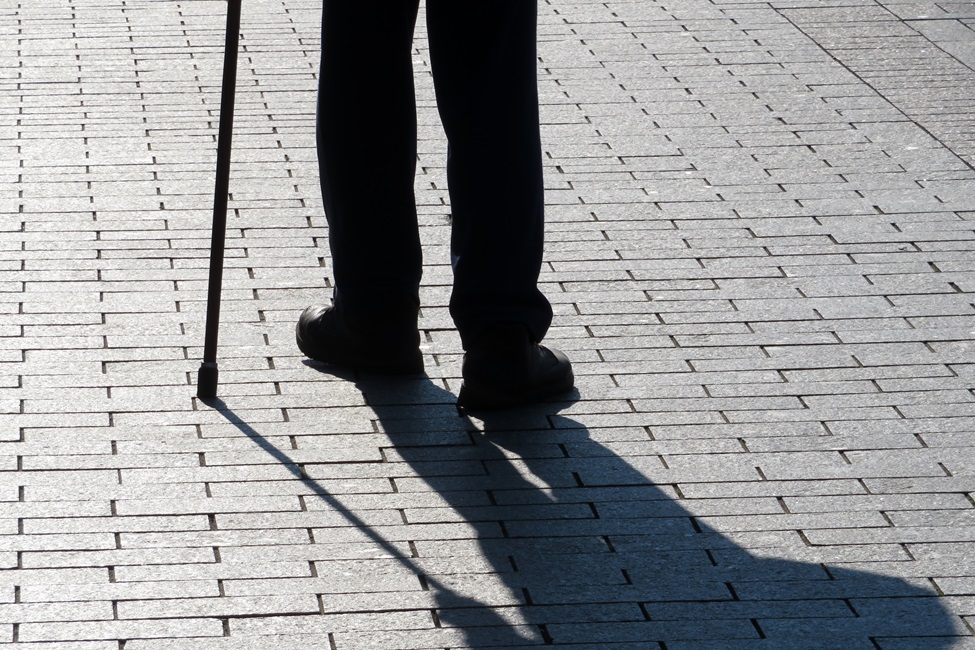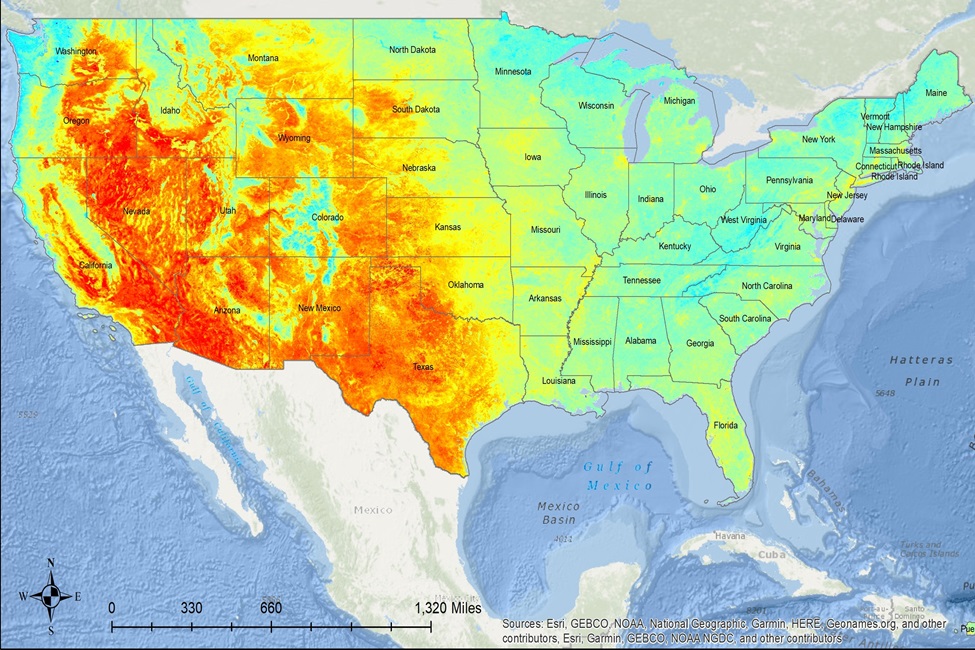Hot Streets, Historic Bias: Impacts on Walking in Older U.S. Adults

A neighborhood’s walkability is affected by many factors such as street connectivity and density; access to destinations and aesthetics; investment in walking and biking infrastructure; and the presence or absence of urban natural features, specifically tree cover.
Not all neighborhoods are alike. Many neighborhoods in impoverished and minority communities lack the cooling effect of vegetation and tree cover, especially in urbanized areas. As a result, residents face the “heat island effect,” where temperatures remain higher in urban areas compared to the surrounding rural or natural environments.
Past discriminatory housing policies, like redlining, have played a significant role in disproportionately exposing low-income urban communities to extreme heat. Redlining, a practice that began in the United States during the 1930s, involved marking minority, low-income and migrant neighborhoods as “hazardous” with a red color on maps used by the Home Owners' Loan Corporation for mortgage and insurance decisions.
One possible consequence of historic redlining policies is their enduring effect on the built environment, which includes less greenspace and tree cover, coupled with increased pavement, which in turn raises the likelihood of experiencing urban heat island effects.
To date, no known studies have examined the relationships between urban heat islands, historic redlining, and neighborhood walking in older adults.
To fill this gap, a study led by Florida Atlantic University in collaboration with the University of Miami, examined how individual and neighborhood characteristics, including historic redlining scores, vary with how hot the ground gets in the summer (maximum summer land surface temperature). Researchers also investigated whether higher summer land surface temperature is linked to reduced walking in older adults, and if this relationship varies based on historic redlining scores; and whether neighborhoods with higher redlining scores experience higher summer land surface temperatures.
The study, published in the Journal of Urban Health, suggests that discriminatory policies such as historic redlining have left indelible marks on neighborhoods across the U.S., leaving communities more vulnerable to detrimental environmental exposures, including extreme heat.
Results show that higher summer temperatures were linked to reduced neighborhood walking time, though this was significant only for neighborhoods rated as “still desirable” and “best.” In neighborhoods rated as “definitely declining” or “hazardous,” there was no significant link between temperature and walking, which could be due to a lack of alternative recreational activities, or the fact that lower-income residents walk more for essential tasks and cost-saving reasons. Additionally, neighborhoods with poorer redlining scores had higher peak summer temperatures.
“Neighborhoods with historic redlining scores of ‘still desirable’ and ‘best’ tend to have more favorable built and social environments for walking, such as higher socioeconomic status, more greenspace, and better pedestrian amenities,” said Diana Mitsova, Ph.D., senior author and chair and professor of the Department of Urban and Regional Planning within FAU’s Charles E. Schmidt College of Science. “However, we found that people in these affluent neighborhoods walked less when temperatures were higher. This might be because older adults in wealthier areas often have alternative transportation options and other ways to exercise, so they may reduce walking in extreme heat.”
Findings also show:
- People living in the South and West had lower peak summer temperatures compared to those in the Northeast and Midwest
- Neighborhoods with higher area deprivation and more African American/Black residents experienced higher summer temperatures
- Neighborhoods rated as “best” for redlining had lower peak summer temperatures than those with other redlining scores
- Hispanic and Asian individuals, as well as those with higher incomes, were less likely to live in areas with high summer temperatures
“While more research is required, our findings highlight the urgent need to address urban heat islands in historically marginalized communities,” said Mitsova. “This is especially critical as older adults in these areas, who are more vulnerable to heat-related health issues, face greater exposure to extreme temperatures and associated health risks.”
For the study, researchers used data from the 2017 National Household Travel Survey, which included information from more than 260,000 people. They combined this with summer temperature data and linked it to social and environmental characteristics, including historic redlining scores. They also assessed the amount of greenspace in each respondent’s neighborhood. The study focused on 3,982 older adults with an average age of 73 years.
Study co-authors are Lilah M. Besser, Ph.D., and Elaine T. Le, Department of Neurology, Comprehensive Center for Brain Health, University of Miami Miller School of Medicine.

Researchers examined how individual and neighborhood characteristics vary with how hot the ground gets in the summer (maximum summer land surface temperature). Photo credit: Florida Atlantic University (Data Source: National Centers for Environmental Information)
-FAU-
Latest Research
- How Florida's Guardian ad Litems Build Trust with Youth in Foster CareResearchers surveyed 555 Guardian ad Litems in Florida to explore how they engage with youth in foster care, the dynamics of these relationships, and the role of training in building and maintaining them.
- New Screener Assesses Bank Resilience Amid CRE ConcernsAs the U.S. banking industry faces pressure from unrealized losses on securities and exposures to commercial real estate, a "stress test" from a FAU finance professor reveals another vulnerability.
- Experts Challenge Aspirin Guidelines Based on Flawed Trial RelianceExperts argue that the flawed results of the ASPREE trial unduly influenced aspirin restrictions, highlighting the need for rigorous statistical principles in trial design to avoid misleading conclusions.
- FAU Secures $1.3M NIH Grant for HIV Self-Test Technology BreakthroughFAU engineering and biomedical researchers are working to meet a critical global health need by developing a reliable, rapid and affordable HIV test for early detection, with an expected cost of under $5.
- FAU Announces Winners of 2025 'Three Minute Thesis (3MT®) Competition'Florida Atlantic University has announced the winners of the ninth annual Three Minute Thesis (3MT®) Competition hosted by the Graduate College.
- AI 'Speaks' Genetic 'Dialect' to Predict Future SARS-CoV-2 MutationsFAU engineering researchers have developed a powerful AI model called Deep Novel Mutation Search that predicts SARS-CoV-2 virus mutations more accurately and efficiently than costly and lengthy lab experiments.






